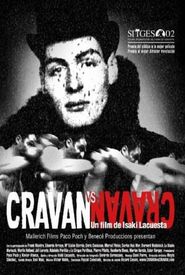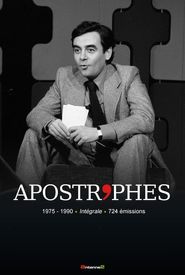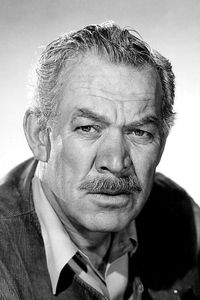Eduardo Arroyo Rodríguez was a highly acclaimed and multifaceted Spanish creative force, whose far-reaching artistic endeavors and contributions left an indelible mark on the world of visual arts, literature, and design.
Born on February 26, 1937, in the vibrant city of Madrid, Spain, Arroyo Rodríguez's life was a testament to his innate talent and dedication to his craft.
Throughout his illustrious career, he made a significant impact as a painter, graphic artist, author, and set designer, leaving behind a legacy that continues to inspire and influence generations of artists and creatives.
His life came to a close on October 14, 2018, but the indelible mark he left on the world of art and culture will forever be remembered and celebrated.
Born with a passion for storytelling, he initially embarked on a career as a journalist, graduating from the prestigious School of Journalism in Madrid in 1958. However, as he grew older, he became increasingly disillusioned with the Francoist regime's authoritarian grip on Spain, ultimately leading him to make the bold decision to leave his homeland at the tender age of 21.
With a sense of adventure and a desire for creative expression, he set his sights on the City of Light, Paris, where he began to weave a new narrative for himself. Initially, he continued to hone his writing skills, working as both an author and journalist. Yet, as time went on, he found himself drawn to the world of art, and it wasn't long before he devoted himself entirely to the pursuit of painting.
As he delved deeper into the world of art, he discovered a newfound sense of purpose and fulfillment, allowing him to express himself in ways he never thought possible. And so, his journey as a painter began, marked by a sense of liberation and creative freedom that would stay with him for the rest of his life.
In the captivating city of Paris, a serendipitous encounter took place, as Arroyo formed lasting bonds with a group of visionary artists, including the illustrious Gilles Aillaud and the renowned Joan Miró. This chance meeting led to a fruitful collaboration with Aillaud, as they worked together to create breathtaking stage sets that would leave a lasting impression on the art world.
As the years went by, Arroyo's talent and dedication continued to flourish, culminating in a groundbreaking exhibition in 1964 that marked a significant turning point in his career. This pivotal moment was followed by a remarkable achievement in 1976, as he dominated the prestigious post-Franco exhibition of Spanish art at the esteemed Venice Biennale, further solidifying his position as a leading figure in the art world.
Gilles Aillaud:
* Born: 1928
* Died: 2005
* French artist and sculptor
* Collaborated with Arroyo on stage sets
* Known for his work in the Nouveau Réalisme movement
Joan Miró:
* Born: 1893
* Died: 1983
* Spanish surrealist artist
* Collaborated with Arroyo on stage sets
* Known for his abstract and figurative works
Fernando Arroyo's artistic expression was a masterful fusion of various styles, incorporating the bold and expressive elements of nouvelle figuration, the narrative and figurative aspects of figuration narrative, and the playful, popular appeal of pop art. A distinctive hallmark of his works was the deliberate eschewing of traditional spatial depth, resulting in a two-dimensional quality that flattened the visual plane and created a sense of flatness. This visual strategy was often accompanied by a rich tapestry of irony, as well as a bold and vibrant color palette that added depth and emotional resonance to his compositions.
As a highly skilled and accomplished set designer, Arroyo had the privilege of collaborating with a diverse range of esteemed directors, including the renowned Klaus Michael Grüber, whose innovative and visionary approach to theatrical storytelling undoubtedly influenced Arroyo's own creative process.
Throughout his illustrious career, Arroyo's exceptional talent and expertise as a set designer were showcased in various esteemed theaters and performance venues, including the iconic Piccolo Teatro in Milan, Italy, a cultural institution known for its commitment to avant-garde and experimental productions.
In addition to his work in Italy, Arroyo's impressive portfolio also includes collaborations with the prestigious Paris Opéra, a world-renowned institution that has been a hub for classical music, opera, and ballet for centuries.
Furthermore, Arroyo's impressive credentials also extend to the Salzburger Festspiele, a renowned summer festival held annually in Salzburg, Austria, which has a rich history of hosting some of the most prestigious and acclaimed productions in the world of opera and classical music.
Renowned Spanish artist, Juan Arroyo, has garnered an impressive array of accolades and awards throughout his illustrious career, with a notable highlight being the esteemed National Award for Plastic Arts bestowed upon him by the Spanish authorities in the year 1982.
Furthermore, his foray into the realm of stage plays yielded a notable success with the premiere of "Bantam" in 1986, which captivated audiences and left a lasting impression.
Arroyo's artistic endeavors have garnered widespread international recognition, with his creations showcased in some of the most prestigious institutions globally. The Centre Pompidou in the City of Light, Paris, has proudly displayed his work, alongside the Solomon R. Guggenheim Museum in the Big Apple, New York, and the esteemed Museo Nacional Centro de Arte Reina Sofía in the vibrant Spanish capital, Madrid.























